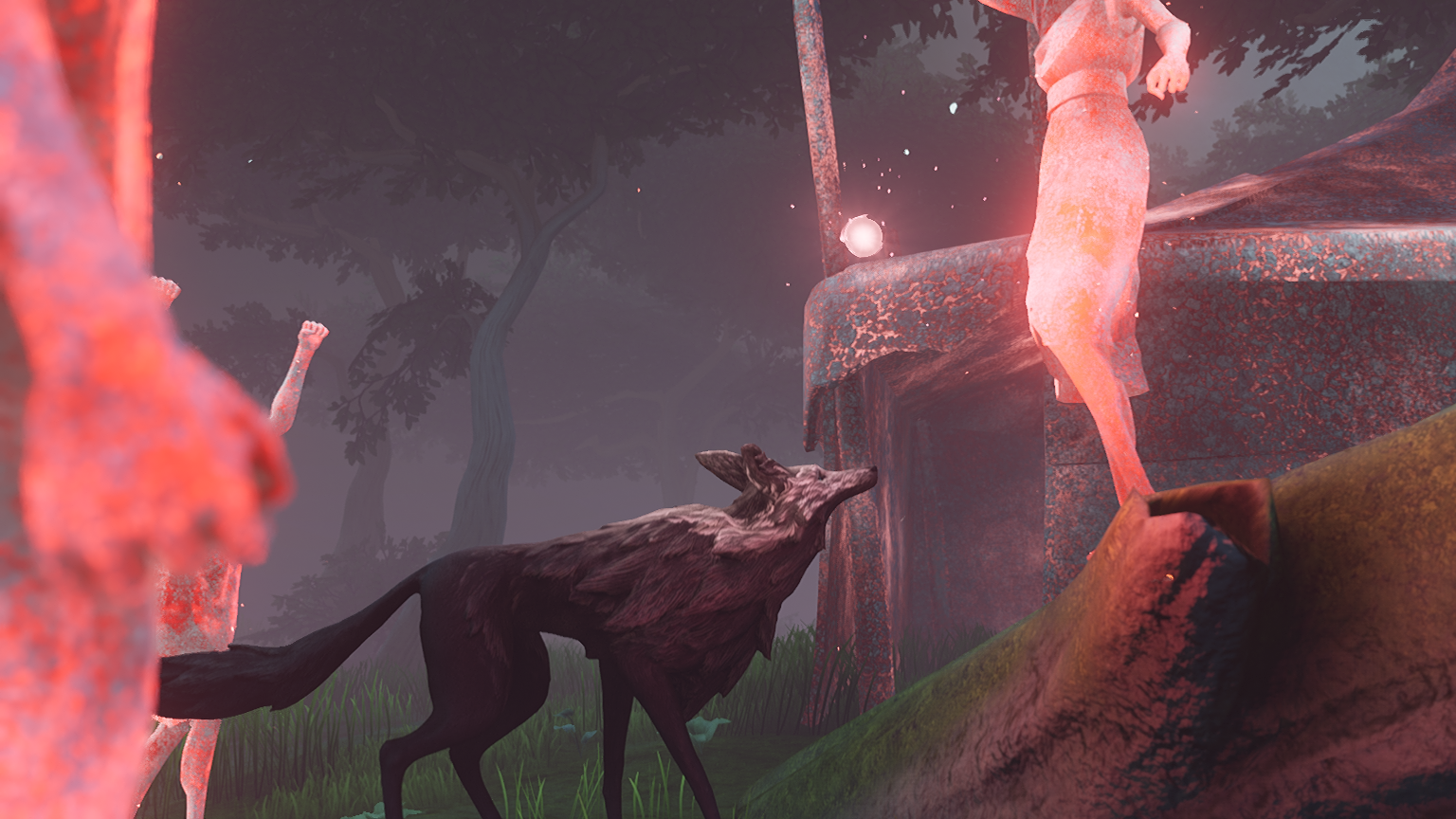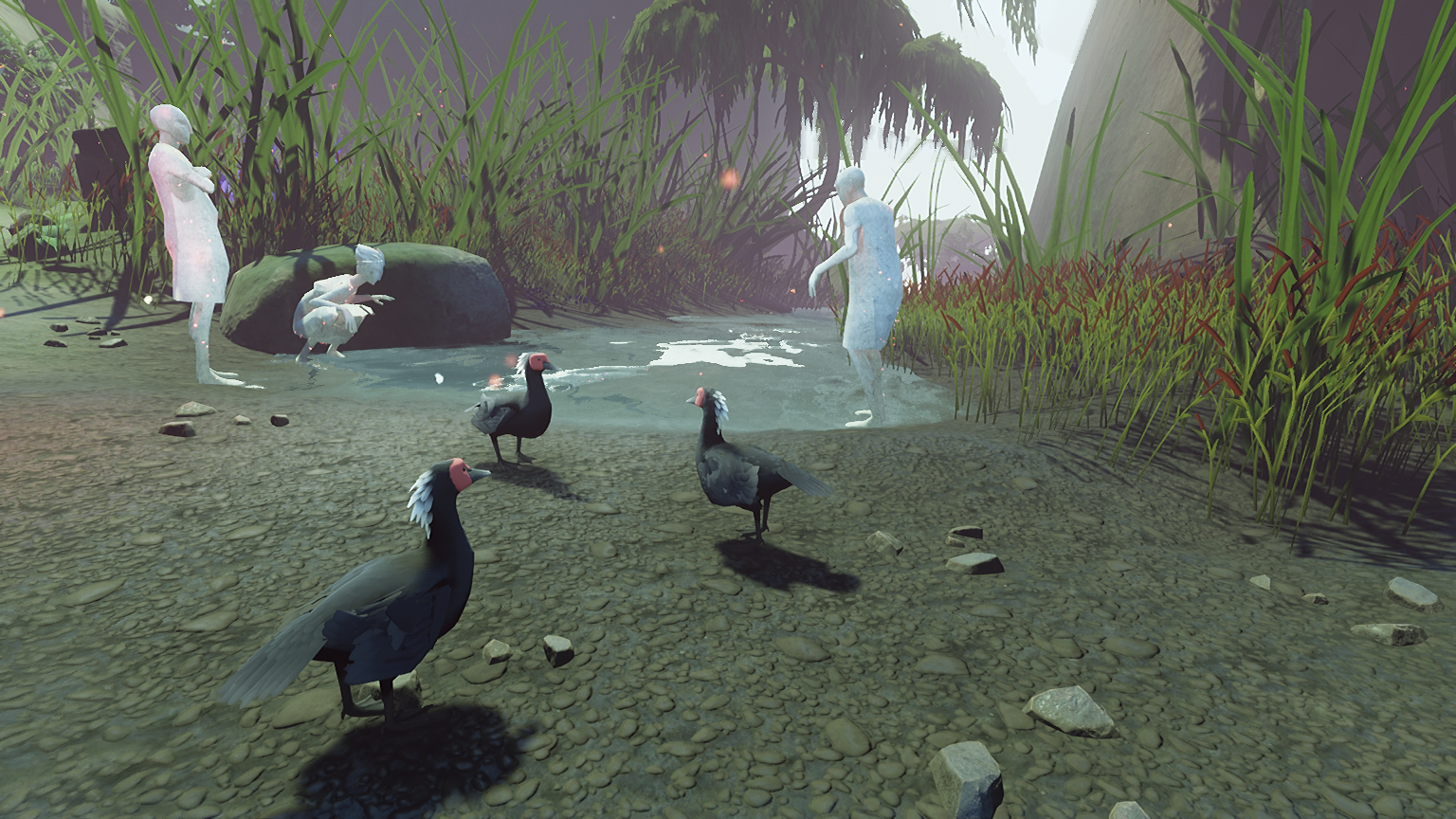
What is it? A nature-loving, animal-possessing adventure with an excellent story.
Expect to pay: $33/£26
Developer: Mooneye Studios
Publisher: Mooneye Studios
Reviewed on: GeForce GTX 1650, AMD Ryzen 5 3550H, 8 GB RAM
Multiplayer: No
Link: Official Site
To be honest, ‘you can possess a wombat and force it to do your bidding’ was just about enough to sell me on Lost Ember, but there’s so much more to the experience than marsupial mind control. The fundamental premise of being able to jump into the body of any creature you see is intriguing enough. Tie it into a story with heart and a surprisingly intricate understanding of life, however, and you have something truly special.
Lost Ember opens with a spirit asking you, a wolf, for help with something. The spirit is the soul of a member of a mysterious people known as the Yanrana. It’s soon revealed that you’re no ordinary wolf, but a Yanranan reincarnated. The spirit decides that you must be a Lost Ember—a member of the tribe for some reason denied entry to the City Of Light after death—and promises to help you understand why.

Mooneye has a deep love and respect for nature, something that becomes apparent within seconds of taking control. Taking my first steps as a wolf, I’m delighted by how realistic the movement is. The environment, from these first moments right up until the credits roll, is endlessly fascinating and a joy to explore. The camera’s perspective when travelling across the ground has been carefully judged to emulate the view of your animal, while soaring through the air or swimming blissfully through a river is no less joyous.
You’ll occasionally need to take control of another animal (achieved with a simple button press) when your default wolf form is, say, too big or too not a fish to keep going. When you become a wombat for example, you don’t gain the ability to sing catchy British indie rock, but you are now adorable enough to squeeze through small gaps. You can also curl up into a ball and roll around in this form, because… well, there’s never a time you’ll have to do this. But this fact offers a window into the true appeal of Lost Ember.
Possession obsession
It’s possible to play through with surprisingly few animal changes, and with no exploration or experimentation, but I can’t imagine anybody playing Lost Ember like that. Once you’ve had a taste of thundering through the air as a hummingbird, seeing previously invisible depths as a fish, or sniffing out a surprise as any animal at all, the urge to wander away from the obvious path becomes too great to resist.
There is almost always something to reward curiosity. There’s a wealth of collectibles to find, and there are also some lovely little touches that could so easily be missed. Lost Ember even encourages you to explore what it terms Silly Little Things, animal actions with no purpose such as lying down or eating berries. I think one of my favourite moments, though, was finding a duckling to take control of. Watching its little legs move at amazing speed while I paddled, and finding that it could only stay in the air for a few seconds when I tried to fly, brought a smile to my face I had no chance of fighting.

How you choose to play can create moments all your own. When you’re finished with an animal, you return to your wolf form, leaving the possessed animal unharmed. Most creatures flee at the sight of the wolf, which leads me to try a little experiment. In the form of a duck, I land in among a flock of my brethren, and jump out. Sure enough, the startled birds scatter into the sky. This is nothing more than gentle fun; the game wouldn’t have let me harm them even if I’d wanted to.
Happily ember after
Lost Ember has no enemies, no puzzles, and very little in the way of threat. It’s possible to ‘die’ by falling too far, but if that happens, you respawn within seconds. The game picks you up, dusts you off, and essentially says ‘hey, don’t worry about it, carry on’. It’s a game that loves me, and I love it back.
I’ve purposefully avoided discussing the story, as it deserves to be experienced fresh. It’s not complex, but it is surprisingly deep, and almost without exception painted with a delicate hand. It masterfully tackles fundamental truths: violence begets violence and blind rage can lead to tragedy. I saw one of the major twists coming at least an hour before it arrived, but even then, it remained superb storytelling.
I came across a few technical hiccups, most memorably when my wolf got stuck in a log after exiting a wombat (now there’s a sentence I didn’t think I’d be typing last week). The section near the end that requires you to control mountain goats is also disappointing. The climbing is slightly awkward, and the most traditionally videogamey part of the experience (not to mention the fact that the camera will sometimes shoot up your goat’s backside). Even so, it doesn’t drag, it’s far from bad, and you get to wallrun as a goat. Not much could’ve totally ruined that experience.

These minor criticisms are swallowed by the sheer bliss that makes up every second of play elsewhere. Every animal has a unique control scheme, and exploring Lost Ember’s gorgeous world as each of them is a delight. Pretentious as it may sound, the love and care that’s gone into this world and the creatures that inhabit it make me feel close to nature. That’s an amazing and admirable achievement.
I resisted taking screenshots of certain events, and even animals, because I want as many people as possible to discover them for themselves. Mooneye has infused Lost Ember with a wonder and a magic that is rarely seen, and I connected with it on a level I never expected.
Read our review policy
Lost Ember is a wonderful, unique, and unforgettable experience with a love for nature.



